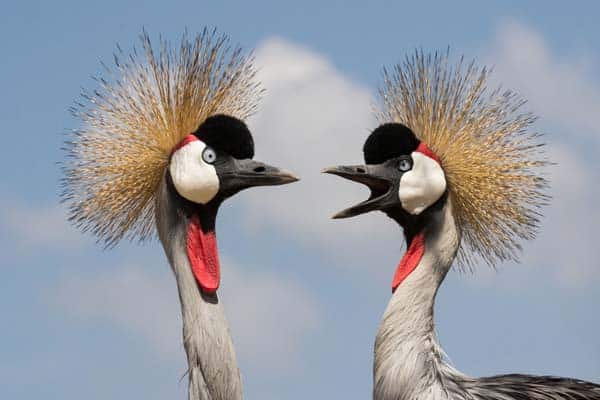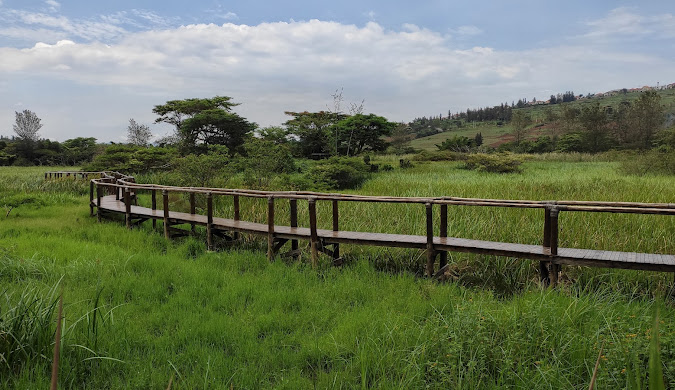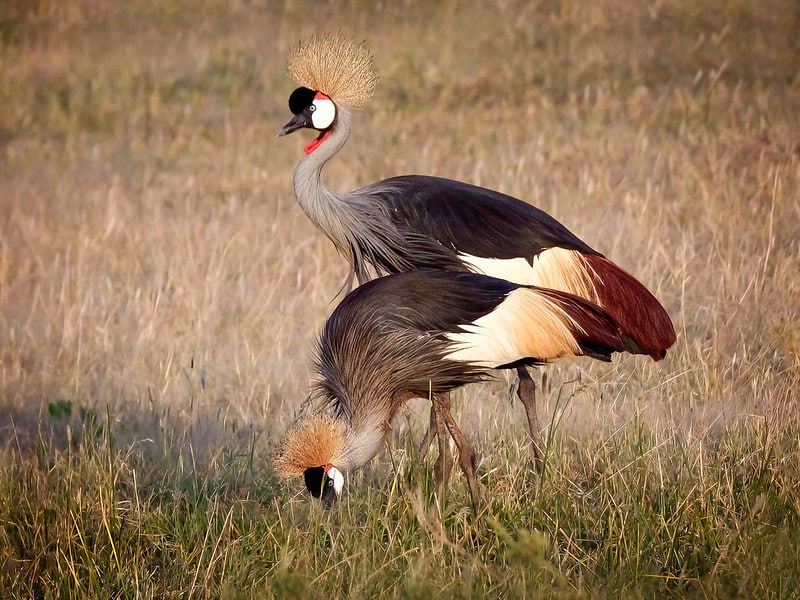The Crested Crane: a symbol of revival
Olivier Nsengimana is the man when it comes to protecting the magnificent Crested Crane in Rwanda. Known properly as the ‘Grey Crowned Crane’, Balearica regulorum, the species remains on the endangered list and efforts are underway to restore habitat and population.
Cranes have cultural significance in Japan, China and Vietnam, in Ancient Greece and Native American tradition, and wherever they are found in Africa. In East Africa, the Crested Crane is a symbol of happiness, good fortune, hope, wealth and longevity, which might explain why it is also the national symbol of Uganda decorating the flag and coat of arms. Like other crane species, the male Crested Cranes are known for their extraordinary dances, making the most of their 2m wingspan as they bob and weave, leap and hop to impress female mates.

The International Crane Foundation share this as one of the stories about how the Crested Cane became crowned:
A great king was stranded on the vast plains on a very hot day. He entreated various birds and animals for help during his wanderings, but none would help him. He was becoming weak and very angry, until he met a flock of cranes.
The king asked the cranes for help and they gladly shaded the old king with their beautiful wings and helped him find shelter among the trees. In thanks, he placed his hand on their heads, and there appeared small golden crowns. The cranes thanked him for this generous gift and then flew off.
Several months later, a crane appeared on the king’s doorstep in a bedraggled state. He told the king the cranes were now hunted day and night for their golden crowns. The king, realizing his foolishness and the greed and jealousy of others, transformed the gold crowns into a halo of golden feathers, which the cranes still have today.
Despite strong taboos on the injury or killing of Crested Cranes, the rapid growth of human population led to loss of wetland habitat, pesticide use, overgrazing cattle, egg collection and illegal trade. Given their beautiful crown of golden feathers, dramatic red, black and white markings and impressive height, at over a meter tall, these birds became trophy pets for the wealthy and elite of Eastern Africa.
A coordinated approach is in action across Rwanda, Uganda, South Africa, Kenya, Tanzania and Zambia to both protect and nurture the 15 species of Crested Crane. In Rwanda, Olivier and his team at Umusambi Village – the first wildlife reserve in Kigali – trace illegally kept birds, rehabilitate and release those that can be returned to the wild, and care for those that cannot. In the Rugezi marshes, to the north of Rwanda, the population has grown from one solitary, non-breeding visitor, to over 221 Crested Cranes inhabiting this high-altitude tropical peatland. Efforts are being made to create a new wetlands national park to protect the area and its endemic wildlife.
Olivier also founded the Rwanda Wildlife Conservation Association, which campaigns for greater awareness to both a local and international audience and endeavours to restore and maintain wildlife. After the devastating events of 1995, the Crested Crane’s recovery has become a symbol of a new Rwanda.
Book a private City Tour of Kigali to visit Umusambi Village and the Crested Cranes.

